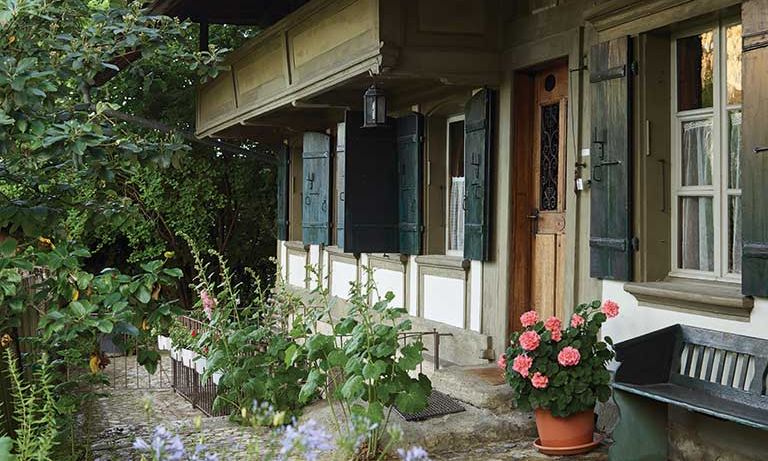The building that was Anker’s home and studio had been in his family for seven generations
Photo: © Alexander-Jaquemet
The Swiss painter Albert Anker captured rural life in Ins, the village between Bern and Neuchâtel where he was born in 1831 and died in 1910. His home there, which stayed in his family for seven generations and has remained virtually unchanged since his death, is set to open to visitors on 7 June.
A modest new wooden building in the garden, designed by the Ins architect Marcel Hegg, will serve as an exhibition space for Anker’s drawings and watercolours. These stayed in the family and were donated by his great-great-grandson, Matthias Brefin, to the Stiftung Albert Anker Haus, a foundation, in 1994. Because Anker never sold them, they are much less widely known than his paintings, most of which are in Swiss museums and prominent private collections. The opening exhibition, Light of the South (until 29 September) will focus on his travels to Italy.
The new Centre Albert Anker is more than a museum in an artist’s home. With a wide, deep roof sloping down to the ground floor and skylights installed by the artist, the house gives exceptional insight into rural Swiss life at the beginning of the 20th century.
Visitors who book a tour can view the studio in the hayloft that Anker converted. His easel, paints, desk and books appear untouched—a clutch of unanswered letters awaits replies by his desk. The kitchen is equipped with an old range cooker and antique pots and pans.
Anker’s contribution to art history is currently undergoing reassessment in Switzerland. His reputation as an artist worthy of serious study has suffered, perhaps in part through his popularity and ubiquitous reproductions, particularly of his portraits of children. He is greatly loved by the former leader of the right-wing People’s Party, Christoph Blocher, who has the largest private collection of Anker’s paintings, and his art is often associated with a nostalgic vision of an idealised Swiss past.
Though technically brilliant, Anker was never a cutting-edge artist and remained true to realism and the official Paris Salon while the Impressionists were rebelling and mounting alternative exhibitions. “Is Anker still alive?” wrote Vincent van Gogh in a letter to his brother Theo in 1883. “I often think about his work. I find it so proficient and delicately interpreted. He truly is one of the old school.”
But politically Anker had some progressive ideas, and this is the focus of an exhibition at the Kunstmuseum Bern (Albert Anker: Reading Girls, until 21 July), a cooperation with the Albert Anker Centre. He was involved in politics at a local and cantonal level and, in later life, at the federal level. He was a fervent advocate of education for all children, including girls—by no means a given in his time.
The son of a vet, Anker remained deeply attached to Ins all his life and portrayed many of the villagers. His home will exhibit some portraits of Ins residents, together with biographies of the models, where they are known.
A range of sponsors, including members of Anker’s family and local and cantonal governments, came together to fund the house’s conversion into a tourist destination. The director of the centre, Daniela Schneuwly, says she expects most visitors will come on day trips from within Switzerland or from nearby France. Schneuwly is already in contact with museums around Europe and hopes the new centre will help to increase Anker’s profile abroad.

